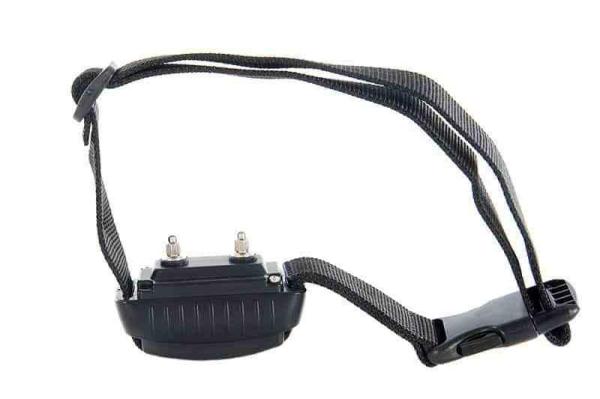How to Train and Communicate With a Deaf Dog



See files for Dogs
Training and educating a deaf dog can be a real challenge because we are used to communicating with our dogs through words. However, our dogs mainly use body and non-verbal language to express themselves, communicate and interact, both with us and with other animals and with their environment. For this reason, all dogs, including deaf dogs, are able to interpret various signs, gestures and facial expressions even if they are not able to hear the words.
The following AnimalWised article will give you tips and advice on how to train and communicate with a deaf dog.
Do deaf dogs have learning difficulties compared to other dogs?
Deaf dogs are just like hearing dogs in every other respect. When we discover that a dog is deaf, or when we consider adopting a deaf dog, it is important to sort through the misinformation to learn how best to live with a deaf dog.
Deaf dogs learn very quickly to pay close attention to their surroundings. This makes it easy to work with their instincts when training. Since dogs are naturally oriented to their humans, once we have their attention, we can teach them to associate certain hand signals and body language with the desired behavior or action.
Deafness in dogs does not limit their cognitive, emotional or social abilities. In addition to their keen sense of smell, good eyesight, and other abilities, dogs have a complex and varied body language that includes many postures, actions, and facial expressions. Moreover, when properly stimulated, deaf dogs can develop a better sense of sight and smell, compensating to some extent for their hearing loss.
Deaf dogs can have learning problems, but these problems are probably caused by inappropriate training methods, which can impact any dog's training. Due to this reason, we never use counterproductive or dangerous training methods such as choke collars, punishment, or scolding to train a deaf dog. Instead, we use positive reinforcement to encourage the dog's learning and reward his performance.
The life of a deaf dog can be normal, long, rich, and happy with a little thought, consideration, and training (for both dog and human).

Vibrating collar for deaf dogs
Training a dog means that you must teach the dog to respond to your commands, and this is true even for a deaf dog. The biggest difference between a hearing dog and a deaf dog is that you cannot use your voice to get the dog's attention.
This is where the vibrating collar comes in. The vibration signal for a deaf dog is the equivalent of using your voice to get your hearing dog's attention. However, keep in mind that a vibrating collar is not the answer to your training problems. It is not a magical device that will get your stubborn or impetuous pup to start listening to you. It is a tool to help you communicate better with your deaf puppy.
Remember, you must first teach your dog the meaning of vibration. Most people who have put a vibration collar on their deaf dog have gotten one of two reactions, sometimes both. Either the dog ignored the collar completely, or he was slightly startled and looked around for the source of the vibration. Do not worry. If your dog seems to ignore the vibration at first, it does not mean the collar is unusable or defective.
Your ultimate goal in this work is to reach the point where your dog consistently looks at you every time you page him or her. A dog that is trained to look at its handler when paged will find it even when it is out of the handler's sight.
You may also be interested in this other article, where we explain the most common mistakes in raising a puppy.

Is there sign language for deaf dogs?
There are no fixed hand signals for the education and training of a deaf dog. This means that there are no wrong hand signals. The key is to pick a few that you will use and then be consistent. Some people use American Sign Language (ASL) signs, others just make up the signs they use.
Below are some general guidelines to keep in mind when choosing signs for training your deaf dog:
- Always use the same signs.
- Choose signs that you can perform with only one hand. Remember that you will often be holding the leash with your other hand.
- It is important to select signals that are easy to do and different so that the dog does not get confused.
- Be sure to teach these signals to your family and friends so that everyone can communicate with your deaf dog.
- If you are not sure which signs to use, a professional trainer can help teach you the hand signals used in obedience work.
Basic tips for training a deaf dog
As mentioned earlier, there is not much difference in training a deaf or hearing dog. Nevertheless, when training a deaf dog, there are some peculiarities that you must take into account. Below you will find the most important of them:
Learn to get the dog's attention
Since your deaf dog can not hear your voice, you'll have to rely on visual signals like hand signals or other body language to communicate. But your dog can not see your signals if they are not looking at you. So the first step in training a deaf dog is to teach them to focus on you. Start by rewarding your dog with a treat or a game when they voluntarily look at you. This reinforces the behavior and teaches your dog that paying attention to you is rewarding.
Find appropriate treats
since you can not encourage your deaf puppy by the tone of your voice, food is even more important when training (more so than with other dogs). Find a source of healthy treats that you can offer your dog throughout the day. However, make sure they do not exceed 10% of your dog's daily calories. It's best to consult your veterinarian to find a treat that is tailored to your dog's needs.
Get your dog used to physical contact
Physical contact will play a fundamental role in your relationship with your deaf dog, as you will need to touch them frequently. Therefore, it is essential that the dog learns to get used to physical contact, and you should start this training as early as possible. If the dog is awake but not paying attention to you, touch them lightly in a specific area, such as the shoulder or flank. Immediately give them a small treat. Repeat this as often as possible over a period of at least 2 to 3 weeks. Once your dog has learned that touching that spot is something positive, you can get their attention without startling them.
Avoid off-leash walks outside
it is best to keep the dog on a leash outside at all times. This is a good idea for all dogs, but specially for a deaf. Their limited ability to recognize danger and respond to commands makes even playing at the dog park off-leash risky.
Frequent and short training sessions
Train your dog two or three times a day. Spread these sessions throughout the day and let them last 5 to 10 minutes each. Too long training sessions can bore the dog and ruin the training. Always end training sessions on a positive note and with a great reward. And remember that every dog needs different amounts of time to learn the tricks. Some commands he may learn in a few days, while others take much longer.
Create your own visual marker and stick to it
Clickers are a popular and effective tool for training dogs that can hear: When the dog obeys the command, immediately sound the device and give them a treat. For deaf dogs, use a visual marker that they associate with the command, action, and treat. You should decide on a single option early in training and stick with it. Again, you should only use this tool for clicker training, never for any other purpose.
If you want to learn more tips and tricks about training your dog, do not miss our guide to dog training.

If you want to read similar articles to How to Train and Communicate With a Deaf Dog, we recommend you visit our Basic education category.








